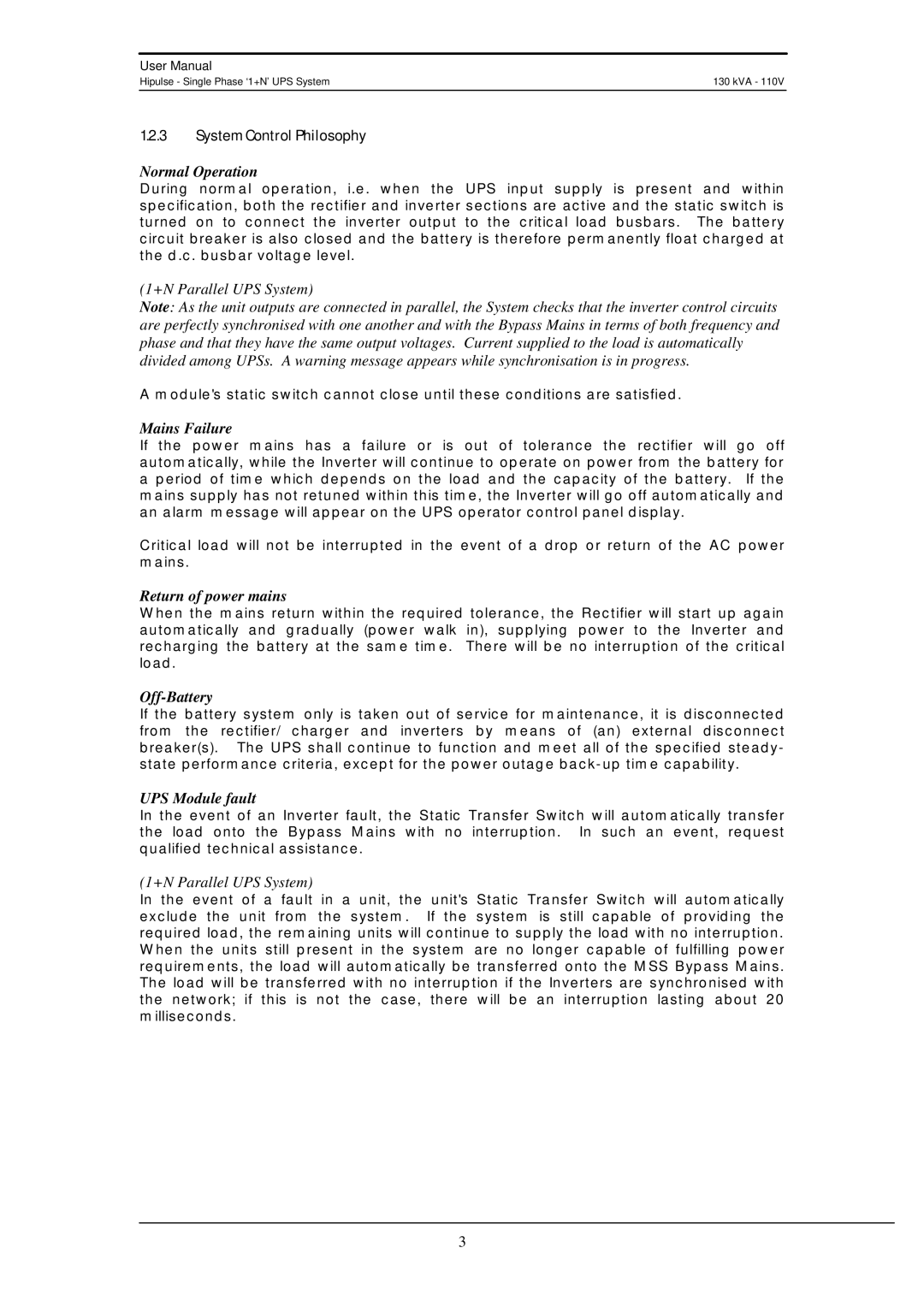
User Manual
Hipulse - Single Phase ‘1+N’ UPS System | 130 kVA - 110V |
1.2.3System Control Philosophy
Normal Operation
During normal operation, i.e. when the UPS input supply is present and within specification, both the rectifier and inverter sections are active and the static switch is turned on to connect the inverter output to the critical load busbars. The battery circuit breaker is also closed and the battery is therefore permanently float charged at the d.c. busbar voltage level.
(1+N Parallel UPS System)
Note: As the unit outputs are connected in parallel, the System checks that the inverter control circuits are perfectly synchronised with one another and with the Bypass Mains in terms of both frequency and phase and that they have the same output voltages. Current supplied to the load is automatically divided among UPSs. A warning message appears while synchronisation is in progress.
A module's static switch cannot close until these conditions are satisfied.
Mains Failure
If the power mains has a failure or is out of tolerance the rectifier will go off automatically, while the Inverter will continue to operate on power from the battery for a period of time which depends on the load and the capacity of the battery. If the mains supply has not retuned within this time, the Inverter will go off automatically and an alarm message will appear on the UPS operator control panel display.
Critical load will not be interrupted in the event of a drop or return of the AC power mains.
Return of power mains
When the mains return within the required tolerance, the Rectifier will start up again automatically and gradually (power walk in), supplying power to the Inverter and recharging the battery at the same time. There will be no interruption of the critical load.
Off-Battery
If the battery system only is taken out of service for maintenance, it is disconnected from the rectifier/ charger and inverters by means of (an) external disconnect breaker(s). The UPS shall continue to function and meet all of the specified steady- state performance criteria, except for the power outage
UPS Module fault
In the event of an Inverter fault, the Static Transfer Switch will automatically transfer the load onto the Bypass Mains with no interruption. In such an event, request qualified technical assistance.
(1+N Parallel UPS System)
In the event of a fault in a unit, the unit's Static Transfer Switch will automatically exclude the unit from the system. If the system is still capable of providing the required load, the remaining units will continue to supply the load with no interruption. When the units still present in the system are no longer capable of fulfilling power requirements, the load will automatically be transferred onto the MSS Bypass Mains. The load will be transferred with no interruption if the Inverters are synchronised with the network; if this is not the case, there will be an interruption lasting about 20 milliseconds.
3
